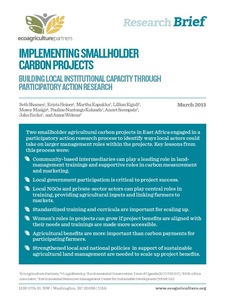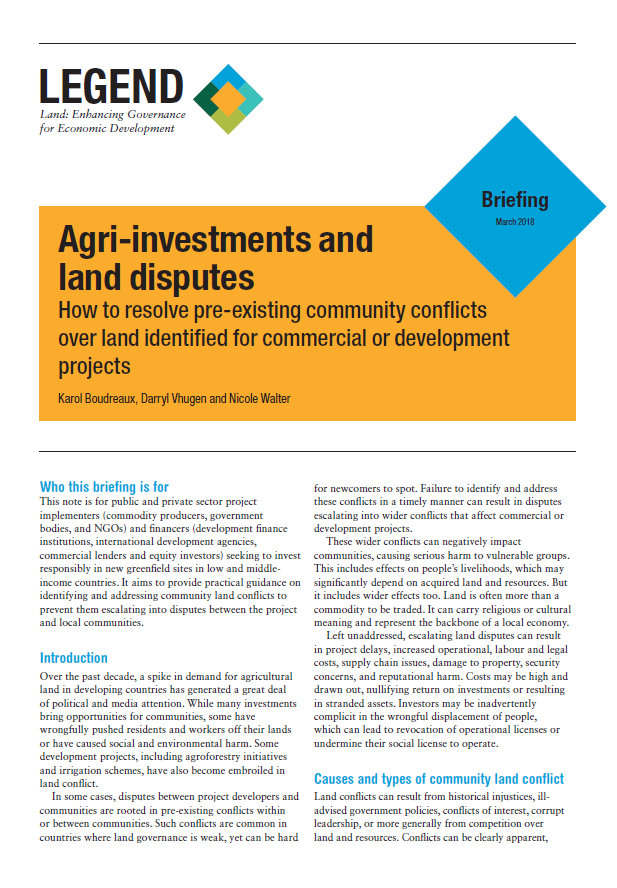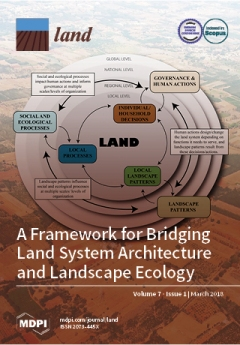Implementing smallholder carbon projects: building local institutional capacity through participatory action research
Two smallholder agricultural carbon projects in East Africa engaged in a participatory action research process to identify ways local actors could take on larger management roles within the projects. Key lessons from this process were:
* Community-based intermediaries can play a leading role in land- management trainings and supportive roles in carbon measurement and marketing.
* Local government participation is critical to project success.






